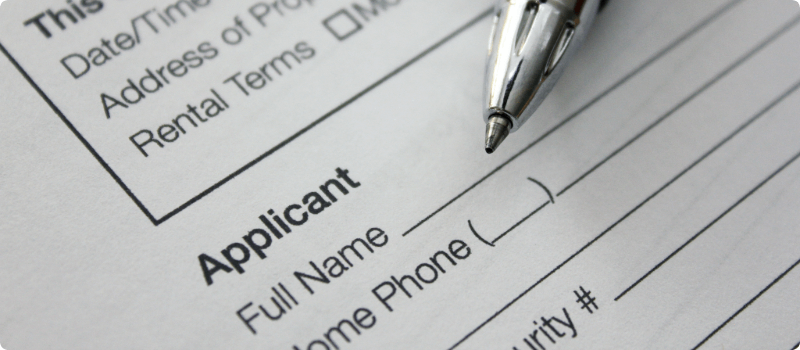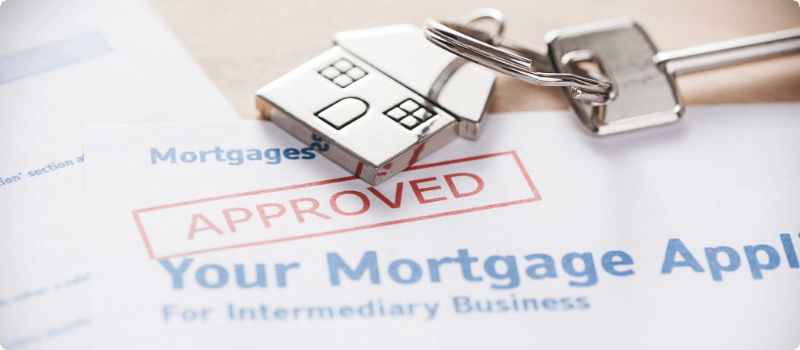
How to Shop for a Mortgage: Your Guide to Shopping & Saving
Updated April 1, 2024 . AmFam Team
When you set out to buy a home, it may seem like getting a mortgage is just another task. But the truth is, even in a very competitive market, mortgage offers vary significantly.
Getting your mortgage right the first time is crucial because your decision will have lasting repercussions on your financial state for years. This article addresses the various steps of mortgage shopping, from credit score management to identifying good mortgage rates to help you make an informed decision about your financial future.



Get Your Credit Score in Check Before Mortgage Shopping
It's important to check your credit score before starting your home-purchasing journey. The higher your credit rating, the better the odds of receiving affordable mortgage terms and a competitive interest rate. You’re allowed one free credit report per year, so check in with the major credit bureaus and download yours before applying for a mortgage.
What is a good credit score for a mortgage?
If you’ve got bad credit and your credit score is under 580, you may want to work on improving that score by paying down your credit cards and debt before you start shopping for a mortgage. Some lenders may not be willing to lend to you. Likewise, if your score is above 580, you’re more likely to meet the minimum qualifications for lending. A good credit score for a mortgage is between 700 and 749.
What credit score do mortgage lenders use?
Many lenders reference the credit bureau's FICO® scores to determine your credit risk. Lenders also use this score when assigning an interest rate to your loan.

How to Apply for a Mortgage Without Hurting Your Credit Score
Understanding the length of your mortgage shopping window before applying for a mortgage is important.
When you apply for a loan, your credit score typically drops a few points from the lender's “hard inquiry.” Once done, you typically have a 45-day mortgage shopping window — after the first hard inquiry is performed on your FICO® score.
It pays to check with your lender about its scoring model because some companies only allow a 14-day mortgage shopping window. If you apply with multiple brokers while shopping for a mortgage, their individual hard inquiries will be registered as a single inquiry in that time frame.
How does getting a mortgage affect your credit score?
It depends on your financial situation. If you’re in good fiscal health with plenty of savings, the shift can be nominal. If not, it may have a bit more of an impact. However, there are ways to shop for a mortgage without hurting your credit.
You can work with Credit Karma (Opens in a new tab) or another financial services group to help you understand your credit issues and get a feel for your creditworthiness. You may also use these groups to apply for and field your offers. A hard inquiry will be performed once you’re ready to fill out your mortgage application.

Check If You’re Prequalified or Preapproved for a Mortgage
After you’ve applied for a mortgage, understanding if your lender has preapproved your application or if you’re simply prequalified is key. It’s a lengthier process to get preapproved for a mortgage vs. prequalified.
How long does the preapproval process take?
The mortgage preapproval process can take anywhere from one to three business days after submitting your application. But after that hard work is done and you get approved, you’ll have a valuable letter from your lender stating you’ve been given a green light to purchase a home.
The letter will usually contain a price cap and a deadline, valid anywhere from 60 to 90 days, but typically you’ll have around a 45-day shopping window for mortgages. You may be able to extend that window with an additional re-verification by the lender.

Learn About the Types of Mortgage Loans
After preapproval, consider your mortgage type options and select one that best benefits you financially. It can be a challenge to compare mortgage offers when shopping, but with the help of an experienced realtor and a seasoned mortgage broker, they can help guide you to an offer and loan estimate that works best for you. Here are a few of the more common types of mortgages:
Fixed-Rate Mortgage (FRM)
Usually a safer bet, fixed-rate mortgages are great for buyers looking for predictability in their housing costs who are planning on living in the home for at least a decade. You may have the option to repay the mortgage on a 15- or 30-year repayment schedule. Some lenders offer 20- or 25-year terms, too.
In many cases, shorter repayment periods are rewarded with lower interest rates for your mortgage loan. And if you’re able to pay the mortgage off quickly, you may save thousands of dollars in interest payments.
These are fully-amortized fixed rate loans — meaning that the loan will be fully paid off at the end of the payoff schedule. FRMs are quite popular simply because the interest rate is locked in — or fixed — over the entire life of the loan.
Adjustable-Rate Mortgage (ARM)
This type of mortgage is ideal for those who plan to live in their home for a few years. It typically yields a much lower rate than a fixed-rate mortgage — but if you stay beyond the expiration date, the rate will likely be much higher. Thereafter, your interest rate will adjust to the average interest rate, which can be risky. The low-rate period of adjustable-rate mortgages usually lasts from 5 to 7 years.
Interest rates on these types of loans ebb and flow as the current interest rate goes up and down. It’s a riskier mortgage, in some cases because there’s no guarantee the market will be stable. ARMs typically start at a lower rate than their FRM counterparts.
Government-Guaranteed Mortgages
Guaranteed mortgages are typically offered by a government agency that purchases your loan from a lender. They guarantee to fund the loan in the event of a default on the mortgage and use the home as collateral against the debt.
Both the Federal Housing Administration (FHA) and the Department of Veterans Affairs (VA) have home loan options that are great for first-time home buyers. They usually come with lower down payment requirements and allow more people to qualify. USDA loans are another great option when shopping for a mortgage, though qualifying for one is based on your income and location.
Here are a few types of guaranteed governmental loans:
- FHA loan
- VA loan
- USDA loan
FHA loans are attractive to many buyers because the minimum down payment is only 3.5 percent of the home purchase price — you’ll need at least 5 percent with a conventional loan. If your credit needs improving, you may qualify for an FHA loan with a FICO score of 580, whereas other loan types need that value to be a bit higher.
Another big advantage of opting for an FHA loan is that buyers are allowed to borrow up to 6 percent of the purchase price to pay for closing costs. FHA loans require private mortgage insurance (PMI) which you’ll pay for at closing and every month until 20 percent of the loan is paid.
Bridge Loans
A bridge loan is a temporary loan on your existing home. It's a short-term loan that helps bridge the gap when paying two mortgages. They may be used to help pay for your home that’s still on the market after closing on a new home purchase.
Piggyback Loans
Also referred to as a second common trust, the common piggyback loan is actually a series of loans that equal the total amount of the sale price. Typically, the loans are divided into an 80/10/10 split where 80 percent of the purchase price is funded through one loan, and two others at 10 percent are mortgaged separately. One covers the down payment, and the second trust loan is usually funded at a higher annual percentage rate.
Balloon Mortgages
Usually reserved for commercial real estate purchases, balloon mortgages do not fully pay off the total sales price until the final payment, which is much larger than the amortized payments. The large balance due at maturity can be substantial.
Jumbo Loans
These are loans that exceed the government-sponsored limits set for typical lending home purchases.

Learn About the Mortgage Lenders
There are many different types of lenders out there. But how do you pick a mortgage lender that’s right for you? It may be wise to rely on a financial adviser to help you select a lender that’s best aligned with your goals. From online providers to local credit unions to privately funded mortgages, you’ve got options. For more details on how to shop for a mortgage lender, our first-time home-buyers hub can help you understand the basics of lending.

Shop for the Best Mortgage Rates
After applying for mortgages and receiving offers from each lender, it’s time to dive into the numbers. If you’re not looking carefully at the differences between each offer, you could be leaving money on the table. To help set yourself up for financial success, work with your financial advisor or make a spreadsheet that compares mortgage rates and contrasts each offer, so you know which saves you the most money.
How do you compare mortgages?
You may be able to plug your numbers into an online mortgage loan comparison calculator to help you see the differences between loans. Let’s suppose that you’re considering a 15-year loan vs. a 30-year loan when mortgage shopping.
If you select a 15-year loan, the total cost may be reduced by tens of thousands of dollars. You’ll pay more each month, but in addition to the savings, you may pay off your home in half the time.

How to Negotiate Your Mortgage Offer
After determining the best mortgage rate or deal, you may be able to negotiate with lenders by having mortgage firms compete against your best offers. Shopping for mortgage lenders and letting them compete for your business may help you save money and score a more attractive ARM or fixed-rate mortgage. You may even find lenders offering discounts on points, closing fees and other incentives.
Work with your lender to reduce closing costs — you may even ask about servicing fees and other nominal costs while negotiating mortgage rates. If it works, you’ve saved more of your hard-earned money.

Make Your Mortgage Loan Selection
After receiving a negotiation response from your lenders, it’s time to compare the final offers again and select a mortgage. After choosing the best mortgage for you and your budget, let the lender know you’re ready to move forward and sign the deal. They’ll put together a timeline and typically work with a title company to build out a closing statement and get you into your new home.
Because buying a home is likely one of your most significant investments, having expert advice in your corner can be very helpful. Moreover, our guide for first-time home buyers can help shine a light on each step involved in purchasing a home.

Understand the Mortgage’s Terms of Repayment
After selecting a lender, the company will give you a mortgage financial statement detailing your loan specifics, including a mortgage payment breakdown. There, you’ll find information on fixed or adjustable rates, among other data.
It's essential to understand how mortgage interest works. Make sure to review your loan terms with your financial adviser so you're aware of the long-term implications of one offer over another.
Interest, APR, points ̶ what do these terms mean?
Understanding the terms and conditions of a mortgage agreement can be challenging. However, it's crucial to familiarize yourself with the agreement's terms so you're fully aware of your financial commitment to the loan. Our hidden costs of closing on a home calculator is a fantastic resource to get you up to speed on these definitions. It can also build an estimate of costs you may encounter at closing.

Start Considering Your Homeowners Insurance Options
Buying a home and finding the best mortgage is a lifelong dream for many. Once you achieve that, it's helpful to carefully insure your new home to help protect you from unexpected losses.
While considering your insurance coverages, check in with your American Family Insurance agent and request a customized quote. Our agents may be able to maximize your insurance dollars — and point you toward key savings and discounts.
This article is for informational purposes only and based on information that is widely available. We do not make any guarantees or promise any results based on this information. This information does not, and is not intended to, constitute legal or financial advice. You should contact a professional for advice specific to your situation.
*Customers who bundle home and auto insurance policies may save up to 23% on both policies together (as of December 2023). Discounts may vary by state, property, policy form and company underwriting the home and/or auto policy. Discounts may not apply to all coverages on a home or auto policy.
Tools & Resources
NextScripts
JSS component is missing React implementation. See the developer console for more information.

